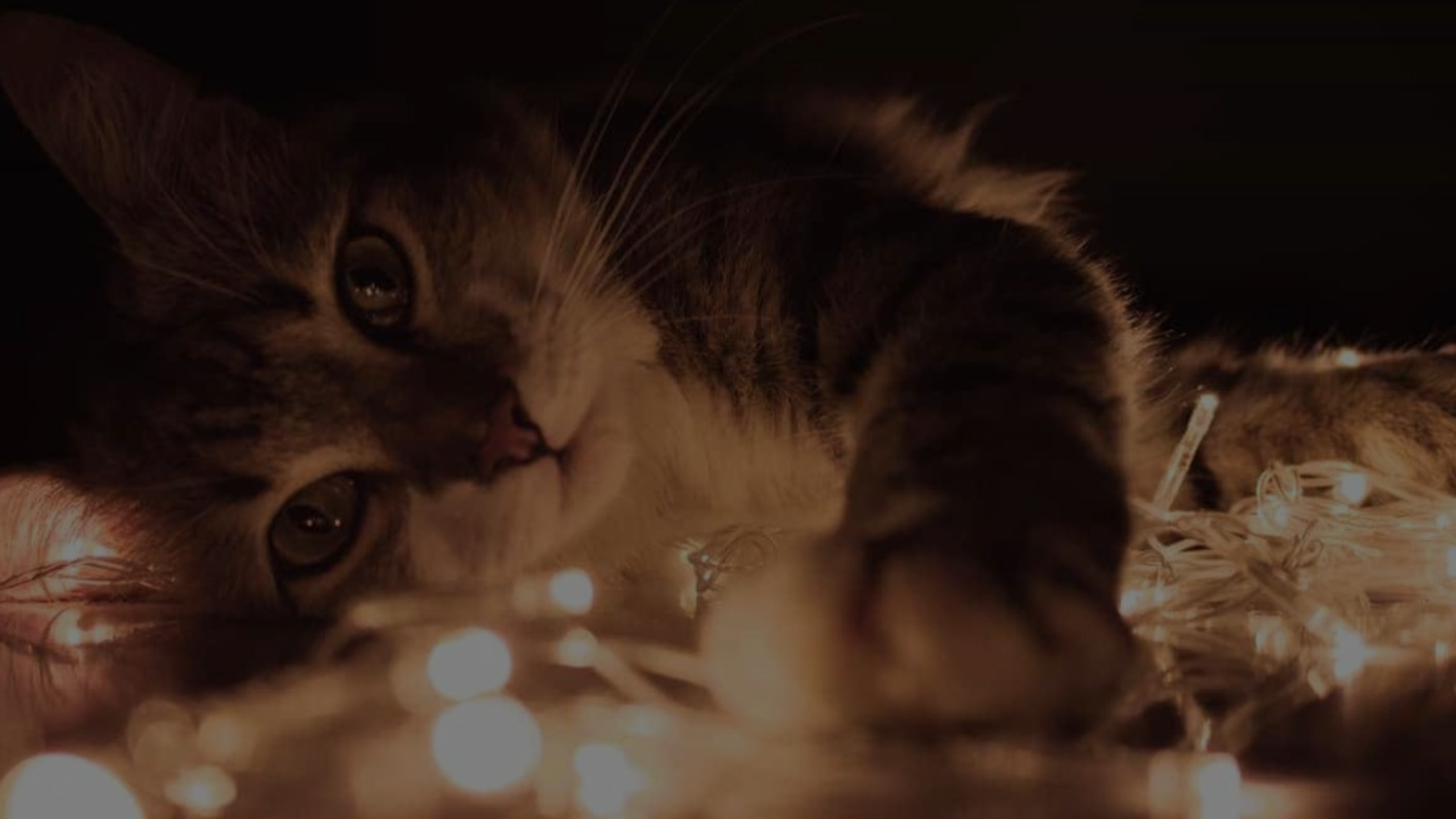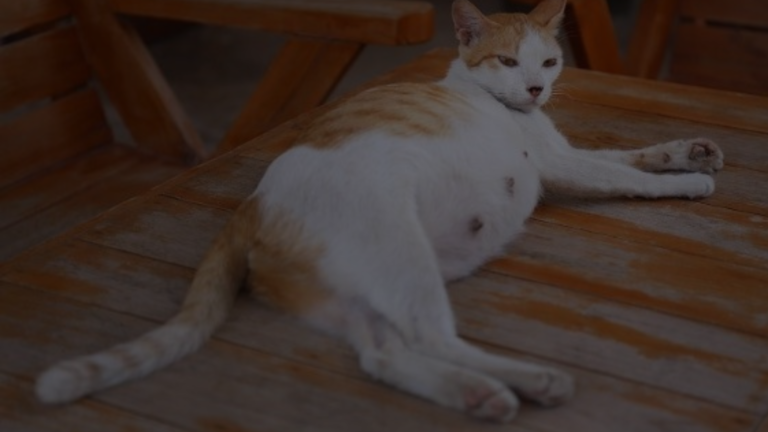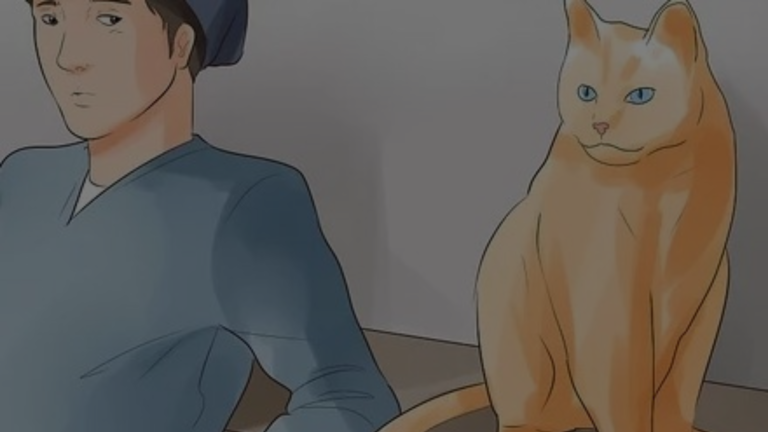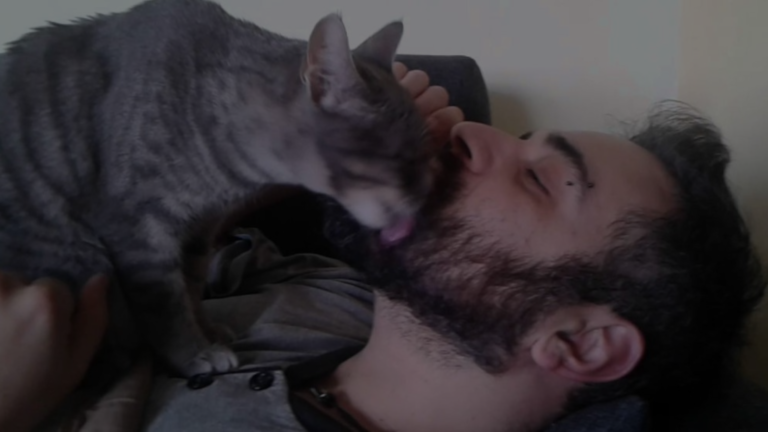Allergy sufferers often yearn for the companionship of cats, but their dreams are often dampened by the allergy symptoms triggered by Fel d 1, a protein found in cat saliva and dander. The prospect of hypoallergenic cats, specifically bred to produce less Fel d 1, seems like a godsend. Now the question is: Are tabby cats hypoallergenic? Unfortunately, the belief that tabby cats are naturally hypoallergenic due to their distinctive coat patterns is a misconception.
Tabby cats may often have shorter coats, which tend to shed less than longer-haired varieties, but shedding isn’t the only factor determining a cat’s hypoallergenic nature. The true culprit behind cat allergies remains Fel d 1, produced by all cats, regardless of coat length or pattern. Even shorthaired tabby cats can produce significant amounts of Fel d 1.
The idea of tabby cats being inherently hypoallergenic is a myth. However, certain short-haired tabby breeds may produce lower levels of Fel d 1, making them slightly less allergenic than other cats. But even these breeds cannot guarantee an allergy-free experience.
Are Tabby Cats Hypoallergenic?
Cat allergies, a common affliction that can cause a range of unpleasant symptoms, are often attributed to a cat’s coat. However, the primary culprit behind these allergies is not the fur itself but a protein called Fel d 1, produced by a cat’s sebaceous glands.
These glands are located in the skin and release Fel d 1, which then mixes with dander, the tiny flakes of dead skin shed by cats.
The presence of tabby markings has no bearing on the amount of Fel d 1 a cat produces. Tabbies come in various coat lengths and textures, ranging from short-haired to long-haired, and shedding levels can differ between individuals.
However, all cats, regardless of their coat pattern or length, produce Fel d 1, which can trigger allergic reactions in susceptible individuals.
The misconception that tabby cats are inherently hypoallergenic stems from the belief that shorter coats shed less, potentially reducing the amount of dander in the environment.
While it’s true that shedding contributes to dander distribution, it’s not the only factor that determines a cat’s hypoallergenicity.

Fel d 1 production is primarily influenced by genetics and breed-specific traits. Certain cat breeds, such as the Siberian, Devon Rex, and Sphynx, are naturally low-allergen due to their unique coat structures or reduced saliva production, which lowers the amount of Fel d 1 they deposit on their fur.
Tabby Breeds with Reduced Fel d 1 Levels
While not entirely hypoallergenic, certain tabby breeds have been shown to produce lower levels of Fel d 1, making them slightly less allergenic than other cats. These include:
- Abyssinian: Known for their distinctive ticked tabby coats, Abyssinians are playful and affectionate cats with an average Fel d 1 production.
- Oriental Shorthair: With their slender bodies and sleek, short coats, Oriental Shorthair are intelligent and energetic cats with a lower Fel d 1 level than many other breeds.
- Balinese: Long-haired descendants of the Siamese, Balinese cats are known for their soft, silky coats and gentle nature. Their Fel d 1 production is generally considered to be moderate.
Factors Affecting Fel d 1 Production
The amount of Fel d 1 a cat produces is influenced by a combination of factors, including genetics, breed, and lifestyle.
Genetics Plays a Pivotal Role
Genetics plays a significant role in determining a cat’s Fel d 1 production. Certain cat breeds, such as the Siberian, Devon Rex, and Sphynx, have been selectively bred for their low-allergen characteristics. These breeds often possess unique physical traits that contribute to their reduced Fel d 1 levels.
Breed-Specific Traits Affect Allergens
Some cat breeds have distinguishing features that influence their Fel d 1 production. For instance, the Siberian’s water-resistant double coat traps dander, preventing it from easily dispersing into the environment. The Devon Rex’s hairless body and reduced saliva production minimize the amount of Fel d 1 they shed. The hairless Sphynx’s lack of fur eliminates the dander source.
READ: Savannah Cat Hypoallergenic
Lifestyle Choices Matter
Even within a breed, individual cats may produce varying levels of Fel d 1 due to lifestyle factors. Intact male cats generally produce higher levels than neutered males or female cats. Additionally, cats with excessive stress or anxiety may experience an increase in Fel d 1 production.
Managing Dander Dispersal
Regular grooming and bathing can help reduce the spread of dander, further minimizing the risk of allergic reactions. Regular brushing removes dead skin and loose fur, while bathing removes excess sebum, the substance that carries Fel d 1.

Focusing on Low-Allergen Breeds
Allergy sufferers seeking feline companions can consider breeds known for their lower levels of Fel d 1. These include:
- Siberian: With their thick double coats and reduced Fel d 1 production, Siberians are considered one of the most hypoallergenic cat breeds.
- Devon Rex: Their unique curly hair and sparse undercoat make Devon Rexes relatively low in Fel d 1.
- Sphynx: Hairless cats like Sphynxes produce no dander, eliminating the primary allergen source.
Tabby Breeds with Reduced Fel d 1 Levels
Abyssinian
- Distinctive Tabby Markings: Abyssinians are renowned for their vibrant ticked tabby coats, featuring short, close-lying hairs with alternating dark and light bands.
- Playful and Affectionate: Abyssinians are known for their playful and energetic nature, often described as “little dogs in cat bodies.” They are highly intelligent and enjoy interactive games and training.
- Moderate Fel d 1 Production: Abyssinians generally produce an average level of Fel d 1, making them a slightly less allergenic choice for allergy sufferers.
Oriental Shorthair
- Sleek and Elegant: Oriental Shorthairs are known for their slender bodies, sleek short coats, and captivating almond-shaped eyes. They come in a wide range of colors and patterns, including classic tabby.
- Intelligent and Energetic: Oriental Shorthairs are remarkably intelligent and energetic cats, known for their talkative nature and playful antics. They thrive in interactive households.
- Lower Fel d 1 Production: Oriental Shorthairs generally produce a lower level of Fel d 1 than many other cat breeds, making them a suitable option for allergy sufferers.

Balinese
- Graceful and Elegant: Balinese cats are long-haired descendants of the Siamese, known for their graceful movements and expressive blue eyes. Their coats are soft and silky, and they come in several tabby patterns.
- Gentle and Affectionate: Balinese cats are known for their gentle and affectionate nature, often forming strong bonds with their human companions. They love to be involved in family activities and enjoy cuddling.
- Moderate Fel d 1 Production: Balinese cats generally produce a moderate level of Fel d 1, making them a slightly less allergenic option for allergy sufferers.
Considerations for Allergy Sufferers
While certain breeds may produce lower amounts of Fel d 1, it’s crucial to understand that no cat is completely hypoallergenic. Even cats with reduced Fel d 1 production can trigger allergic reactions in some individuals. This is due to the individual’s sensitivity to other allergens, such as saliva or pollen, which can be transferred by the cat’s fur.
Tailored Approach for Allergy Sufferers
For allergy sufferers seeking feline companionship, it’s essential to take a cautious and informed approach. The following steps can help minimize the risk of allergic reactions:
- Consult a Veterinarian or Allergist: A thorough examination and allergy testing can identify the specific allergens that trigger an individual’s reaction. This information is crucial for choosing a suitable cat breed and managing the home environment to minimize exposure.
- Consider Low-Allergen Breeds: As mentioned earlier, certain cat breeds, such as the Siberian, Devon Rex, and Sphynx, are known for their reduced Fel d 1 production. However, even within these breeds, individual cats may vary in their allergen levels.
- Undergo a Trial Period: Before welcoming a cat into an allergy sufferer’s home, a trial period is recommended. This involves spending time with a cat in a controlled environment, such as the breeder’s home or a friend’s house, to assess the severity of the reaction.
- Manage Dander and Allergens: Regular grooming, bathing, and thorough cleaning of the home can help reduce the spread of dander and allergens. Vacuuming frequently, especially on carpets and furniture, and washing bedding and linens regularly are essential measures.
- Maintain a Clean and Dust-Free Environment: Dust mites, a common source of allergies, can also trigger reactions. Regular dusting, using a HEPA-filtered vacuum cleaner, and keeping the home well-ventilated can help minimize dust mite accumulation.
Resources & References
Conclusion
The allure of feline companionship can be irresistible, even for those with cat allergies. While the idea of tabby cats being inherently hypoallergenic is a misconception, certain tabby breeds, such as the Abyssinian, Oriental Shorthair, and Balinese, have been shown to produce lower levels of Fel d 1, making them slightly less allergenic than other cats.
For allergy sufferers seeking to share their lives with these enchanting creatures, a well-informed decision is paramount. Consulting a veterinarian or allergist to assess the specific allergens and recommend suitable cat breeds is crucial. Additionally, a trial period in a controlled environment can provide valuable insights into the potential reaction.
Remember, the joy and companionship that cats bring are invaluable. With careful consideration, allergy sufferers can embark on a journey of love and laughter, surrounded by the warmth and affection that only feline companions can offer.
FAQs – Tabby Cats
What are tabby cats?
Tabby cats are a common type of cat with a distinctive pattern of stripes or spots on their fur. The most well-known tabby pattern is the classic tabby, which features stripes that run vertically down the body. However, there are many other variations of tabby patterns, including spotted tabby, mackerel tabby, and ticked tabby.
Are all tabby cats hypoallergenic?
No, not all tabby cats are hypoallergenic. The main culprit behind cat allergies is a protein called Fel d 1, which is produced in a cat’s saliva and dander. All cats produce Fel d 1, regardless of their coat color or pattern. However, some breeds of cats produce lower levels of Fel d 1 than others.
What are some tabby cat breeds that are considered to be hypoallergenic?
There are a few tabby cat breeds that are considered to be hypoallergenic, such as the Abyssinian, the Oriental Shorthair, and the Balinese. These breeds have been selectively bred to produce lower levels of Fel d 1. However, even these breeds can trigger allergic reactions in some people.
How can I reduce my risk of allergies if I own a tabby cat?
If you have allergies, there are a few things you can do to reduce your risk of reactions from a tabby cat:
- Regularly groom your cat: Brushing and combing your cat’s fur will help remove loose hair and dander, which can reduce the amount of allergens in your home.
- Bathe your cat regularly: Bathing your cat with a hypoallergenic shampoo can also help remove dander and allergens.
- Avoid allowing your cat to sleep in your bed: This will help reduce your exposure to cat dander at night.
- Vacuum your home regularly: Vacuuming your carpets, furniture, and bedding can help remove dander and other allergens.
Can I still own a cat if I am allergic to them?
Even if you are allergic to cats, there are still ways to enjoy their companionship. You can consider adopting a hypoallergenic cat breed or spending time with cats in a controlled environment, such as a friend’s home or a cat cafe. You can also take allergy medication to reduce your symptoms.
What are the benefits of owning a tabby cat?
Tabby cats are known for their playful and affectionate nature. They are also relatively low-maintenance, as they do not require a lot of grooming. Tabby cats can make wonderful companions for people of all ages.







